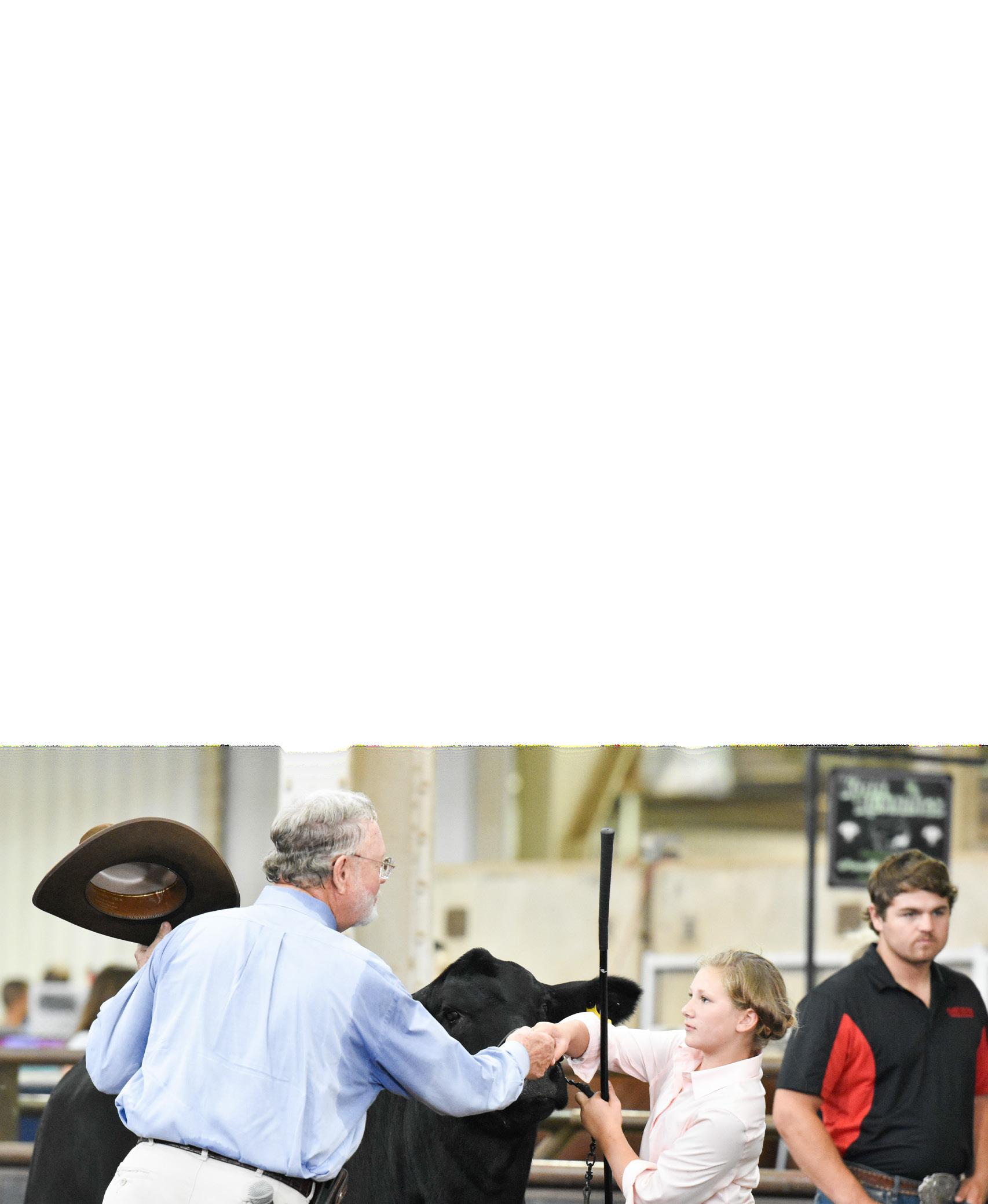FEATURE ARTICLE
HAIR SHEDDING SCORES IN BRANGUS CATTLE A TOOL TO FINE-TUNE HEAT TOLERANCE
by Harly J. Durbin, Ph.D., postdoctoral fellow, University of Missouri and Jared E. Decker, Ph.D., associate professor, state beef extension specialist, and Wurdack chair in animal genetics, University of Missouri INTRODUCTION The Brangus breed was created by mixing Brahman and Angus bloodlines with an eye towards improved heat tolerance. As we move towards improved beef production, increasing heat tolerance continues to be a focus. One tool producers in heat-stressed environments can use to identify well-adapted cattle is early-summer hair shedding scoring. Early-summer hair shedding, or the rate at which the winter coat is lost, is an adaptive trait that prepares animals to better cope with the heat. Cattle that shed their winter coat earlier are less stressed and can direct more energy toward production. Hair shedding scores are used to evaluate earlysummer shedding of the winter coat, as opposed to hair coat scores which evaluate whether the hair is short and smooth versus long and shaggy. For example, Bos indicus cattle will almost always have shorter, less dense hair than most Bos taurus cattle and therefore have more desirable coat scores on average. However, both Bos indicus and Bos taurus cattle shed winter coats and can be evaluated for hair shedding score. Even within Bos indicus-influenced breeds like Brangus, there is ample variation in hair shedding. Consistently, we find that a hair shedding score is about 35-40% heritable. Of note, this value is about halfway between the heritability of weaning weight (about 25%) and carcass traits like marbling (about 45%). Of all the variation observed for hair shedding, about 40% is due to genetic differences between individuals. The remaining 60% is due to differences in environment, management, other non-genetic factors and interactions among these effects. This suggests that hair shedding scores, like body condition scores, could be a good benchmark to adjust our cattle management. HOW TO COLLECT SCORES When collecting hair shedding scores, cattle are evaluated using a 1-to-5 visual scale. On this scale, a 1 is completely slick (100% shed off), a 2 is 75% shed off, a 3 is 50% shed off, a 4 is 25% shed off, and a 5 still has a complete winter coat (0% shed off). While there is some variability in shedding patterns between individuals, cattle tend to shed from front to back and top to bottom. So, compared to a 5 (0% shed off), a 4 (25% shed off) will usually have shed only on her head and neck. A 3 (50% shed) has additionally lost 26
April 2021
hair along her topline, shoulder, and further down her brisket. A 2 (75% shed) usually only retains winter coat on her flanks and around her belly. Hair shedding scores are easy to collect and can be recorded chute-side or in the pasture. It is recommended that producers hair shedding score their herd when they observe the most variation between individuals. Timing varies based on latitude (north to south), management, and other factors, but most producers in the Midwest and South will observe the most variation in late April or early May. Herds should be scored when there are lots of 3s, a few 1s, and a few 5s. If possible, all cattle in the herd should be hair shedding scored on the same day or within a few days of one another. This allows for large, accurate contemporary groups and ensures that all cattle are compared against the same standard. Cattle should be at least yearlings at the time of scoring. Since 2016, producers participating in the Mizzou Hair Shedding Project have collected just under 37,000 hair shedding scores on cattle across the nation, including about 2,000 hair shedding scores on registered Brangus and Ultrablack cattle (Figure 1). Most hair shedding scores were recorded in heat-stressed environments and/or on cattle grazing endophyte-infected (toxic) fescue. Analysis of this data has allowed us to create genetic evaluations of hair
Figure 1







